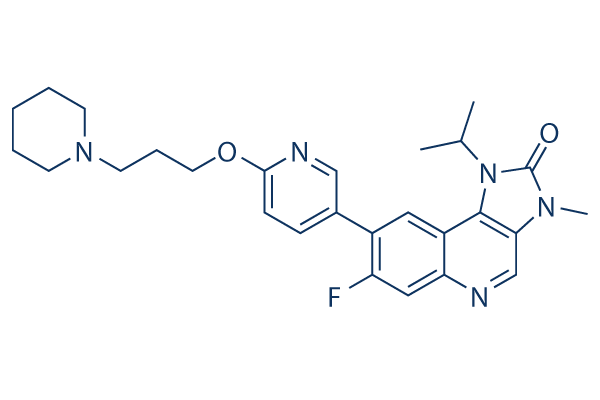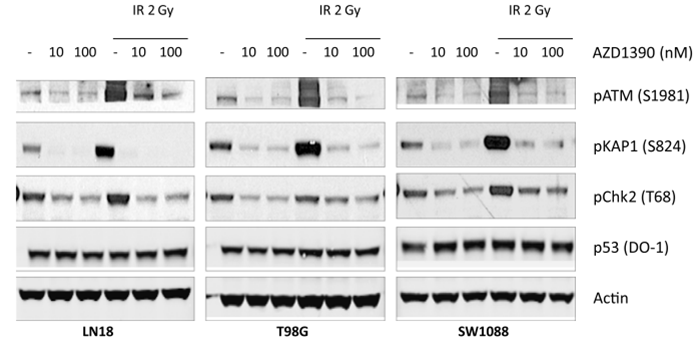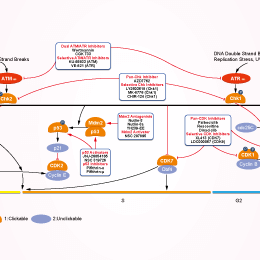
- Bioactive Compounds
- By Signaling Pathways
- PI3K/Akt/mTOR
- Epigenetics
- Methylation
- Immunology & Inflammation
- Protein Tyrosine Kinase
- Angiogenesis
- Apoptosis
- Autophagy
- ER stress & UPR
- JAK/STAT
- MAPK
- Cytoskeletal Signaling
- Cell Cycle
- TGF-beta/Smad
- DNA Damage/DNA Repair
- Compound Libraries
- Popular Compound Libraries
- Customize Library
- Clinical and FDA-approved Related
- Bioactive Compound Libraries
- Inhibitor Related
- Natural Product Related
- Metabolism Related
- Cell Death Related
- By Signaling Pathway
- By Disease
- Anti-infection and Antiviral Related
- Neuronal and Immunology Related
- Fragment and Covalent Related
- FDA-approved Drug Library
- FDA-approved & Passed Phase I Drug Library
- Preclinical/Clinical Compound Library
- Bioactive Compound Library-I
- Bioactive Compound Library-Ⅱ
- Kinase Inhibitor Library
- Express-Pick Library
- Natural Product Library
- Human Endogenous Metabolite Compound Library
- Alkaloid Compound LibraryNew
- Angiogenesis Related compound Library
- Anti-Aging Compound Library
- Anti-alzheimer Disease Compound Library
- Antibiotics compound Library
- Anti-cancer Compound Library
- Anti-cancer Compound Library-Ⅱ
- Anti-cancer Metabolism Compound Library
- Anti-Cardiovascular Disease Compound Library
- Anti-diabetic Compound Library
- Anti-infection Compound Library
- Antioxidant Compound Library
- Anti-parasitic Compound Library
- Antiviral Compound Library
- Apoptosis Compound Library
- Autophagy Compound Library
- Calcium Channel Blocker LibraryNew
- Cambridge Cancer Compound Library
- Carbohydrate Metabolism Compound LibraryNew
- Cell Cycle compound library
- CNS-Penetrant Compound Library
- Covalent Inhibitor Library
- Cytokine Inhibitor LibraryNew
- Cytoskeletal Signaling Pathway Compound Library
- DNA Damage/DNA Repair compound Library
- Drug-like Compound Library
- Endoplasmic Reticulum Stress Compound Library
- Epigenetics Compound Library
- Exosome Secretion Related Compound LibraryNew
- FDA-approved Anticancer Drug LibraryNew
- Ferroptosis Compound Library
- Flavonoid Compound Library
- Fragment Library
- Glutamine Metabolism Compound Library
- Glycolysis Compound Library
- GPCR Compound Library
- Gut Microbial Metabolite Library
- HIF-1 Signaling Pathway Compound Library
- Highly Selective Inhibitor Library
- Histone modification compound library
- HTS Library for Drug Discovery
- Human Hormone Related Compound LibraryNew
- Human Transcription Factor Compound LibraryNew
- Immunology/Inflammation Compound Library
- Inhibitor Library
- Ion Channel Ligand Library
- JAK/STAT compound library
- Lipid Metabolism Compound LibraryNew
- Macrocyclic Compound Library
- MAPK Inhibitor Library
- Medicine Food Homology Compound Library
- Metabolism Compound Library
- Methylation Compound Library
- Mouse Metabolite Compound LibraryNew
- Natural Organic Compound Library
- Neuronal Signaling Compound Library
- NF-κB Signaling Compound Library
- Nucleoside Analogue Library
- Obesity Compound Library
- Oxidative Stress Compound LibraryNew
- Plant Extract Library
- Phenotypic Screening Library
- PI3K/Akt Inhibitor Library
- Protease Inhibitor Library
- Protein-protein Interaction Inhibitor Library
- Pyroptosis Compound Library
- Small Molecule Immuno-Oncology Compound Library
- Mitochondria-Targeted Compound LibraryNew
- Stem Cell Differentiation Compound LibraryNew
- Stem Cell Signaling Compound Library
- Natural Phenol Compound LibraryNew
- Natural Terpenoid Compound LibraryNew
- TGF-beta/Smad compound library
- Traditional Chinese Medicine Library
- Tyrosine Kinase Inhibitor Library
- Ubiquitination Compound Library
-
Cherry Picking
You can personalize your library with chemicals from within Selleck's inventory. Build the right library for your research endeavors by choosing from compounds in all of our available libraries.
Please contact us at info@selleckchem.com to customize your library.
You could select:
- Antibodies
- Bioreagents
- qPCR
- 2x SYBR Green qPCR Master Mix
- 2x SYBR Green qPCR Master Mix(Low ROX)
- 2x SYBR Green qPCR Master Mix(High ROX)
- Protein Assay
- Protein A/G Magnetic Beads for IP
- Anti-Flag magnetic beads
- Anti-Flag Affinity Gel
- Anti-Myc magnetic beads
- Anti-HA magnetic beads
- Poly DYKDDDDK Tag Peptide lyophilized powder
- Protease Inhibitor Cocktail
- Protease Inhibitor Cocktail (EDTA-Free, 100X in DMSO)
- Phosphatase Inhibitor Cocktail (2 Tubes, 100X)
- Cell Biology
- Cell Counting Kit-8 (CCK-8)
- Animal Experiment
- Mouse Direct PCR Kit (For Genotyping)
- New Products
- Contact Us
research use only
AZD1390 ATM/ATR inhibitor
AZD1390 is a first-in-class orally available and CNS penetrant ATM inhibitor with an IC50 of 0.78 nM in cells and >10,000-fold selectivity over closely related members of the PIKK family of enzymes and excellent selectivity across a broad panel of kinases.

Chemical Structure
Molecular Weight: 477.57
Purity & Quality Control
Batch:
Purity:
99.99%
99.99
Related Products
| Related Targets | ATM ATR | Click to Expand |
|---|---|---|
| Related Products | KU-55933 VE-821 KU-60019 Berzosertib (VE-822) Ceralasertib (AZD6738) AZ20 AZD0156 Mirin CP-466722 Elimusertib (BAY-1895344) hydrochloride ETP-46464 Elimusertib (BAY-1895344) CGK 733 VX-803 (M4344) AZ31 AZ32 HAMNO | Click to Expand |
| Related Compound Libraries | Kinase Inhibitor Library PI3K/Akt Inhibitor Library Apoptosis Compound Library Cell Cycle compound library NF-κB Signaling Compound Library | Click to Expand |
Signaling Pathway
Mechanism of Action
| Targets |
|
|---|
In vitro |
||||
| In vitro | AZD1390 blocks ATM-dependent DDR (DNA damage response) pathway activity and combines with radiation to induce G2 cell cycle phase accumulation, micronuclei, and apoptosis. This compound radiosensitizes glioma and lung cancer cell lines, with p53 mutant glioma cells generally being more radiosensitized than wild type. It results in increased genome instability[2]. | |||
|---|---|---|---|---|
| Cell Research | Cell lines | NCI-H2228 cells | ||
| Concentrations | 0-1250 nM | |||
| Incubation Time | 1 h | |||
| Method | Cells (3000 per well) are seeded in a 384-well format in RPMI with 10% fetal bovine serum.After 24 hours, plates are Echo-dosed with a semi-log dose dilution of this compound from a top concentration of 1250 nM. One hour after compound dosing, plates are irradiated with 0, 2.5, or 4 Gy. At 1, 6, 24, and 48 hours after irradiation, plates are fixed by adding a 1:1 volume of 8% PFA directly to the medium to give a final concentration of 4% PFA and incubated for 30 min at room temperature before washing three times with phosphate-buffered saline solution (PBSA). |
|||
| Experimental Result Images | Methods | Biomarkers | Images | PMID |
| Western blot | pChk2 pATM (S1981) / ATM / pKAP1(S824) / KAP1 / pCDK1 |

|
29938225 | |
In Vivo |
||
| In vivo | AZD1390 displays excellent oral bioavailability in preclinical species (66% in rat and 74% in dog). It can efficiently cross the BBB in non-human primate PET studies. Profound tumor regressions and increased animal survival (>50 days) have been observed in orthotopic xenograft models of brain cancer following just 2 or 4 days combination treatment of this compound with radiotherapy, compared to radiotherapy treatment alone[1]. In in vivo syngeneic and patient-derived glioma as well as orthotopic lung-brain metastatic models, this compound dosed in combination with daily fractions of IR (whole-brain or stereotactic radiotherapy) significantly induces tumor regressions and increased animal survival compared to IR treatment alone. This compound has favorable physical, chemical, PK, and PD properties suitable for clinical applications that require exposures within the central nervous system[2]. | |
|---|---|---|
| Animal Research | Animal Models | a lung NCI-H2228 xenograftmodel either implanted into nude mice brains directly (intracranial brain) or injected into the carotid artery [intracarotid artery (ICA)] |
| Dosages | 5, 15 and 20 mg/kg | |
| Administration | by oral gavage | |
| NCT Number | Recruitment | Conditions | Sponsor/Collaborators | Start Date | Phases |
|---|---|---|---|---|---|
| NCT05182905 | Recruiting | Glioblastoma|Glioma|Glioblastoma Multiforme|Glioma Malignant |
Nader Sanai|Barrow Neurological Institute|Ivy Brain Tumor Center|AstraZeneca|St. Joseph''s Hospital and Medical Center Phoenix |
March 9 2022 | Early Phase 1 |
| NCT03423628 | Recruiting | Recurrent Glioblastoma Multiforme|Primary Glioblastoma Multiforme|Brain Neoplasms Malignant|Leptomeningeal Disease (LMD) |
AstraZeneca |
April 2 2018 | Phase 1 |
| NCT03215381 | Completed | Healthy Volunteer Male Subjects |
AstraZeneca|Karolinska Institutet Quintiles IMS |
October 10 2017 | Phase 1 |
References |
|
Chemical Information
| Molecular Weight | 477.57 | Formula | C27H32FN5O2 |
| CAS No. | 2089288-03-7 | SDF | -- |
| Synonyms | N/A | ||
| Smiles | CC(C)N1C2=C(C=NC3=CC(=C(C=C32)C4=CN=C(C=C4)OCCCN5CCCCC5)F)N(C1=O)C | ||
Storage and Stability
| Storage (From the date of receipt) | |||
|
In vitro |
Ethanol : 95 mg/mL DMSO : 14 mg/mL ( (29.31 mM) Moisture-absorbing DMSO reduces solubility. Please use fresh DMSO.) Water : Insoluble |
Molecular Weight Calculator |
|
In vivo Add solvents to the product individually and in order. |
In vivo Formulation Calculator |
|||||
Preparing Stock Solutions
Molarity Calculator
In vivo Formulation Calculator (Clear solution)
Step 1: Enter information below (Recommended: An additional animal making an allowance for loss during the experiment)
mg/kg
g
μL
Step 2: Enter the in vivo formulation (This is only the calculator, not formulation. Please contact us first if there is no in vivo formulation at the solubility Section.)
% DMSO
%
% Tween 80
% ddH2O
%DMSO
%
Calculation results:
Working concentration: mg/ml;
Method for preparing DMSO master liquid: mg drug pre-dissolved in μL DMSO ( Master liquid concentration mg/mL, Please contact us first if the concentration exceeds the DMSO solubility of the batch of drug. )
Method for preparing in vivo formulation: Take μL DMSO master liquid, next addμL PEG300, mix and clarify, next addμL Tween 80, mix and clarify, next add μL ddH2O, mix and clarify.
Method for preparing in vivo formulation: Take μL DMSO master liquid, next add μL Corn oil, mix and clarify.
Note: 1. Please make sure the liquid is clear before adding the next solvent.
2. Be sure to add the solvent(s) in order. You must ensure that the solution obtained, in the previous addition, is a clear solution before proceeding to add the next solvent. Physical methods such
as vortex, ultrasound or hot water bath can be used to aid dissolving.
Tech Support
Answers to questions you may have can be found in the inhibitor handling instructions. Topics include how to prepare stock solutions, how to store inhibitors, and issues that need special attention for cell-based assays and animal experiments.
Tel: +1-832-582-8158 Ext:3
If you have any other enquiries, please leave a message.
* Indicates a Required Field






































